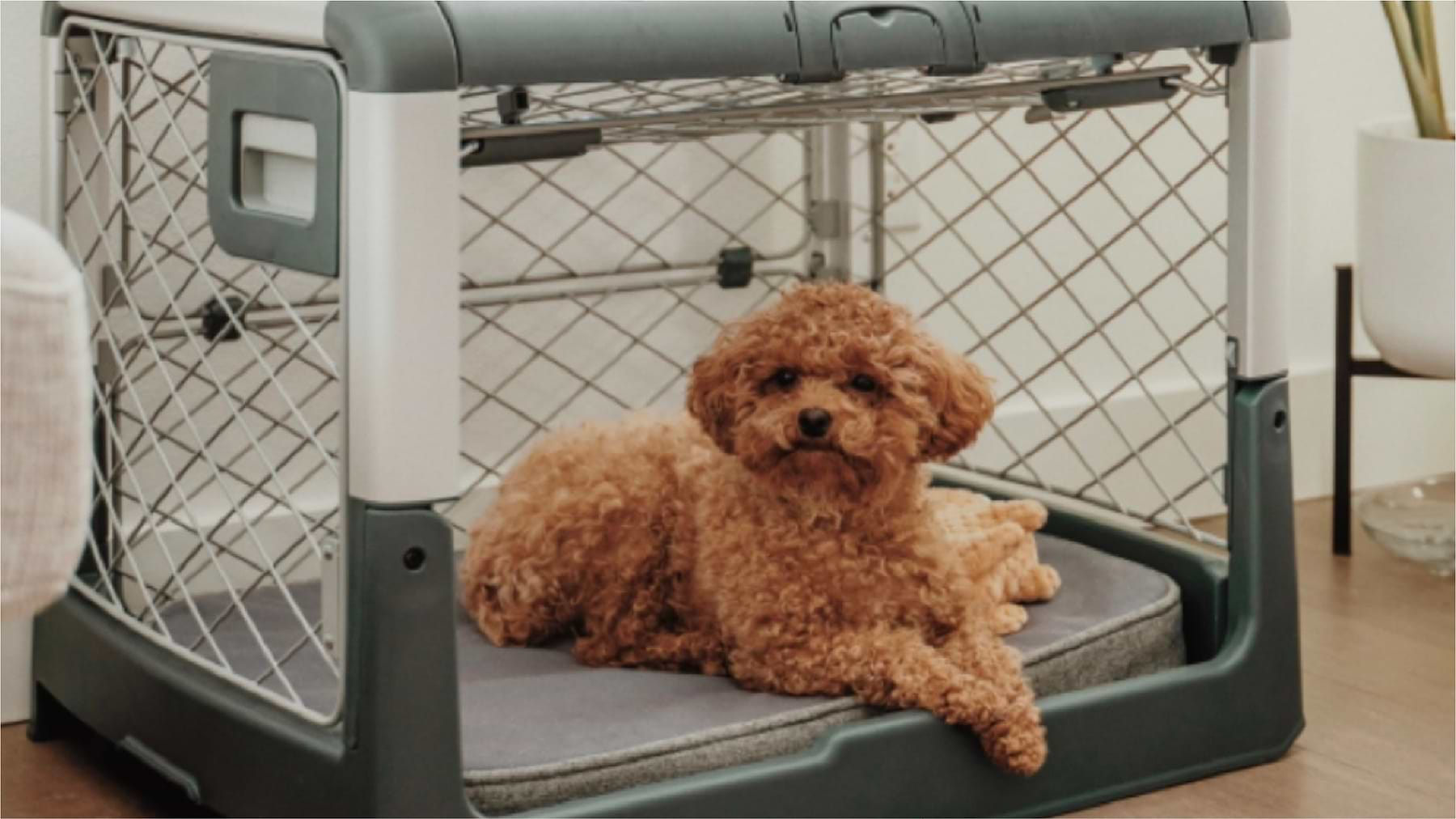It’s common for new pet parents to underestimate the amount to time and effort that go into crate training. Although dogs are denning animals, you can’t just put them in the crate, close the door, and call it a day. That’s a recipe for an unhappy pup!
Depending on your dog’s personality, age, and past experiences with confinement, it can take days or even weeks to fully crate train your dog. We know you want to crate train safely and successfully, so here are five dos and don’ts to help.
DO: Crate train in short intervals
Keep your crate training sessions short and positive. A few minutes of happy crate time will do far more for your pup than a half an hour of distress. Remember that your end goal is for your dog to love being in their crate, so don’t ask for too much too soon. Start with brief moments in the crate, then slowly increase the time your dog spends inside. Pair crate time with lots of rewards, and soon your dog will be happy to hang out in their personal space.
DON’T: Leave your dog in the crate for long periods of time
Dogs are not meant to be crated all day. They need social interaction, exercise, and regular potty breaks. That’s particularly true for puppies who can only hold their bladder for a few hours. Plus, excess crate time leads to problem behaviors because your dog will leave the crate full of pent-up energy and frustration. Once your dog is fully crate trained, if you need to leave them alone for more than three or four hours at a time, consider using doggie daycare or hiring a pet sitter instead.
DO: Encourage your dog to use the crate throughout the day
Your dog’s crate is not just a nighttime bedroom. It’s also a great place to get away from the hustle and bustle, to relax, or to take a nap. It can even help you manage your dog’s behavior. So, to ensure your pup is happy to hang out inside, be sure you encourage them to enter throughout the day. If your dog only uses their crate at night, it might be harder for them to settle inside at other times.
DON’T: Only put your dog in the crate at night
Many dogs use their crate as their bedroom and are eventually happy to spend all night inside. However, dogs are great at forming associations. If you only put your dog in their crate at night, it won’t take them long to make the connection between the crate and eight hours of solitude. That’s simply too long for a dog that doesn’t love their crate yet. Be sure your crate training includes short positive intervals in the crate during the day.
DO: Give your pup things they can safely chew on
While your dog is in their crate, provide them with safe chews, like a bully stick or rubber food-stuffed toy. Dogs love to chew, so this will keep them busy and help prevent boredom. It will also build positive associations with the crate, even more so if you only provide certain special items inside. Just be sure the chews you provide are appropriate for your dog’s chewing style! You should always supervise your dog whenever you give them something new to ensure it’s safe.
DON’T: Let them chew on their crate
Dogs love to chew and the crate can be pretty tempting for some pups. However, chewing on the crate is unsafe, so it’s important your dog never learns that this is an option. Supervise your dog when they are first spending time in their crate and redirect them if they seem inclined to chew the bars or plastic. Boredom or frustration can also lead to inappropriate chewing, so suitable chew toys or edible chews in the crate will keep your pup entertained and appropriately redirect their instincts.
DO: Supervise your dog while crate training
In the beginning stages of crate training, always supervise your pup. First, you need to be sure they are behaving appropriately. For example, make sure they are chewing their toy rather than the crate. Second, you should watch for signs of distress. If your pup is whining and fussing, you’ve likely asked for too much too soon.
Finally, you don’t want your pup to associate the crate with isolation. If possible, spend some time in their line of vision while they are in the crate so that they know you’re nearby. They need to learn that their dog crate is a fun, safe place before they learn to be by themselves.
DON’T: Leave them alone
Once your dog is fully crate trained, you can of course leave them alone for short periods of time. But in the beginning, leaving your dog by themselves in the crate can create negative associations. Your dog shouldn’t see their crate as a place of isolation.
So, stay nearby while they get used to their personal space. Put the crate in a commonly used room during the day. If your pup is using the crate at nighttime, have it in your bedroom. Your pup will have the comfort of your sounds and scent, plus you can hear if they need to go out for a potty break.
DO: Make the crate a positive place
To encourage your dog to love their crate, it is key to build as many positive associations with it as possible. Place treats or toys inside, or better yet, hide them in the bedding so your dog gets to play hide-and-seek. Offer verbal encouragement and praise whenever your dog enters the crate on their own. You can also play games that incorporate the crate like throwing your dog’s ball inside during fetch. Finally, use mealtimes to build your dog’s positive associations with the crate by placing their food dish inside.
DON’T: Use the crate for punishment
A crate is a great place for an overexcited pup to cool down, but there’s a difference between a time-out and punishment. Never place your dog in the crate to discipline them. It will undo all the hard work you’ve done teaching your dog to love being inside. If you punish your dog with crate time, it will make it all the harder to get them inside the next time.
That’s it for today’s list of Do’s and Don’ts. We hope you feel better prepared to tackle crate training with your pup. Remember, it’s worth all the effort to have a dog who loves spending time in their crate. Want to learn more about crate training? Check out our other blog posts on the subject here.
And if you're searching for the perfect crate for your fur baby, Diggs Revol Dog Crate is the perfect choice, with a beautiful blend of baby-product-inspired safety and attractive yet functional form.
Check out our innovative dog crate here, and find all of our the accessories and training products here.

Stephanie Gibeault
Stephanie Gibeault is a freelance writer and certified professional dog trainer with a Master of Science in animal behavior. She is passionate about combining her love of animals with her writing skills to educate and entertain. When she’s not at her keyboard, you can find her tap dancing, taking photographs, or tweeting (@GibeaultWrites).
You might also like
Crate training tips, stories and inspiration
View all blogsIn Your Diggs
Share your photos with #DiggsPet and tag us @DiggsPet on IG and TikTok.



